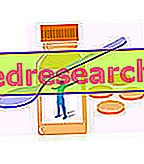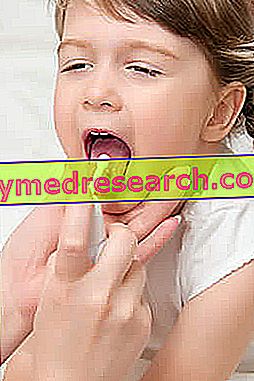Generality
Relaxing herbal teas are natural remedies used to counteract states of stress, nervousness and mild anxiety.

Given the purpose for which relaxing herbal teas are taken, plants containing active ingredients with a sedative, tranquilizing and anxiolytic action are used to prepare them. However, it is important to point out that through the consumption of herbal teas it is not possible to know exactly how many active ingredients are actually being taken, therefore, the effectiveness of such natural remedies could prove to be insufficient.
Please note
Relaxing herbal teas are NOT drugs, therefore they are NOT able to cure stress, restlessness and pathological anxiety. They could be useful only in minor cases and in the absence of underlying diseases.
Therefore, in conditions of high stress, anxiety and nervousness, it is advisable to consult your doctor.
Ingredients
Medicinal Herbs contained in Relaxing Tisanes
As mentioned, a relaxing herbal tea - to be such - must contain plants with anxiolytic, sedative and tranquilizing properties. Therefore, the main characteristics of the medicinal herbs most commonly used in this type of herbal tea will be reported below.
Valerian
Considered the natural tranquilizing remedy par excellence, valerian is widely used in relaxing herbal teas. This plant, in fact, has sedative and anxiolytic properties, due to the valepotriati it contains. These activities have been widely confirmed, not surprisingly, the German Commission has approved the use of the plant against states of agitation and nervousness and against the insomnia that may ensue.
In the preparation of relaxing herbal teas, the root of the plant is usually used.
However, the use of valerian is contraindicated in people with liver disease and in children and adolescents under 14 years of age. Furthermore, valerian can interfere with the action of drugs such as central nervous system depressants (barbiturates, benzodiazepines, opioid analgesics), antidepressants, antihistamines and loperamide.
Chamomile
Chamomile is a plant used in relaxing herbal teas taken before bedtime in order to promote sleep . However, the sedative properties of chamomile are rather mild and, for this reason, it is often used in association with other herbs with tranquilizing activity. However, for the preparation of relaxing herbal teas, the dried flower heads of the plant are used.
Although generally well tolerated, chamomile can interfere with the action of some drugs, such as: coumarin-type anticoagulants, calcium channel blockers, statins and benzodiazepines.
Melissa
Among the ingredients of relaxing herbal teas, lemon balm is also often contained, a plant with well-known sedative and tranquilizing properties which, among other things, have been confirmed by numerous studies conducted on the subject.
For the preparation of relaxing herbal teas, the leaves of the plant are used. Attention, however, to the association with passionflower and hypericum that could favor the appearance of excessively marked and unwanted sedative effects.
passionflower
The flowering tops of passionflower are used for the preparation of relaxing herbal teas against restlessness and insomnia . In particular, the sedative actions of the plant - also confirmed by scientific studies - can be traced back to the flavonoids it contains.
Passion flower should be used with care by patients receiving coumarin anticoagulants and sedative drugs, as the active substances present in the plant may interfere with the activity of the aforementioned medicines.
Hop
Hops is another plant exploited for the preparation of relaxing herbal teas to be taken in case of agitation, restlessness, anxiety and insomnia. The lupulone and the humulone contained in the plant seem to be responsible for the tranquilizing and relaxing activities .
For the preparation of relaxing herbal teas, female inflorescences are used, commonly called cones .
Hops may interfere with psychotropic drugs and alcohol; furthermore, its use is contraindicated in patients suffering from depression.
Hawthorn
Sedative properties exerted at the central level are ascribed to the hawthorn - and more precisely to the proanthocyanidins contained in it.
For the preparation of relaxing herbal teas the flowering tops of the plant are used.
Since the active ingredients contained in the hawthorn are also able to act at the cardiac level (antihypertensive, chronotropic and positive inotropic effects), it can interfere with the action of some drugs used in the treatment of cardiovascular disorders and diseases, such as cardioactive glycosides, antiarrhythmics and antiplatelet agents. For this reason, before including hawthorn in relaxing herbal teas, patients suffering from diseases of the cardiovascular system should seek advice from their doctor.
Lavender
Lavender is another plant widely used in the composition of relaxing herbal teas. In fact, it has modestly sedative properties that are exercised directly at the central level. In particular, it is his essential oil that is responsible for this activity, confirmed by scientific studies conducted on the subject. Thanks to these studies, the German Commission has approved the use of this plant for the treatment of restlessness and agitation and related sleep disorders.
For the preparation of relaxing herbal teas, dried lavender flowers are usually used.
Please note
Relaxing herbal teas can contain only one of the aforementioned herbs, or more commonly an association of the same, in order to increase their relaxing properties.
The herbs with a tranquilizing and relaxing action can be purchased already mixed with each other in the form of preparations for ready-to-use herbal teas, or they can be purchased individually (for example, in herbal medicine) in order to create a personalized mixture.
Other Ingredients
To improve the taste of relaxing herbal teas it is also possible to add other ingredients, such as, for example, aromatic medicinal herbs (eg flowers, leaves or orange peel, cinnamon, etc.), honey or sugar. The addition of similar ingredients, however, is not mandatory and depends on the personal taste of each individual.
Preparation
Preparation methods for Relaxing Teas
Relaxing herbal teas, like any other type of herbal tea, can be prepared substantially in three different ways: through maceration, through infusion, or through the decoction of medicinal herbs.

Maceration
This preparation method involves the maceration of the grass or herbs that you intend to use in cold water for one or more days. Then, after the necessary time has elapsed, the whole is filtered and the liquid obtained is consumed. It is a technique that is used above all in the presence of thermolabile active principles .
Decoction
The decoction is obtained by placing the herb or medicinal herbs in cold water which will then be brought to boiling. The water-herb mixture should be left to boil for 5 to 30 minutes, depending on the type of plant and the part used. After this time, let it rest for a few minutes with the heat off and then filter. It is a rather energetic extraction process that could cause the loss of the most volatile active compounds.
Infusion
The infused herbal tea is prepared by pouring boiling water directly on the grass or on the herbs you want to use and leaving it to infuse for a period of time varying from 5 to 20 minutes. It is a less energetic extraction process than the aforementioned decoction and, therefore, it is useful when the plants used contain volatile active ingredients.
Despite the different preparation methods, in most cases, the relaxing herbal teas are prepared by infusion.
Example of Relaxing Herbal Tea
As mentioned, relaxing herbal teas can be prepared with different ingredients and with different combinations of medicinal herbs with a tranquilizing, sedative and / or anxiolytic action.
Below is an example of a relaxing herbal tea that can be easily made using hops, lemon balm and valerian. For its preparation it will be necessary:
- 30 grams of valerian (root)
- 20 grams of lemon balm (leaves)
- 20 grams of hops (cones)
This relaxing herbal tea is prepared with the infusion method. After boiling a cup of water, pour it over a spoonful of the mixture described above, cover everything and leave to infuse for about 5 minutes, then strain and consume.
To learn more about relaxing herbal teas, you can consult the following articles:
- Sedative herbal tea
- Tranquilizing herbal tea
- Melissa's sedative infusion
- Sedative herbal tea with Valerian
- Sedative herbal tea with Melissa
- Camomile infusion against insomnia
- Sedative herbal tea Herbal tea based on valerian, lemon balm and passion flower
- Sedative herbal tea with valerian, hops and passion flower
- Herbal tea against nervousness and anxious syndromes
Pregnancy and breastfeeding
Can Relaxing Teas be taken during pregnancy and during breastfeeding?
Despite being natural remedies, given the particular condition in which pregnant women and breastfeeding mothers are found, they should seek the doctor's advice before taking relaxing herbal teas or any other herbal or herbal remedy to combat stress, anxiety and nervousness. In fact, the use of some medicinal herbs - such as, for example, passionflower, hawthorn, lavender and hop - is contraindicated during pregnancy and lactation.
Furthermore, we remind that the presence of conditions of great stress and anxiety disorders could represent a serious problem during pregnancy, for which the use of consulting a doctor is fundamental.



